Garden To Vase: The Best Tips For Harvesting, Foraging & Designing Floral Arrangements

Today, we’re very excited to introduce a new collaborator on LaurenConrad.com: Kim Wiseley, Founder of The Floral Pantry, an immersive, dreamy botanical experience where you can create flower arrangements at home through their design-inspired flower kits. Today, Kim is sharing her best tips for harvesting, foraging, and designing arrangements from the beautiful foliage that surrounds us. Welcome, Kim!
My early mornings are filled with wandering the garden, anxious to see what has bloomed, sprouted and taken shape overnight. It’s a ritual that’s peaceful and therapeutic – one that I’m addicted to. From one fellow garden enthusiast to another, IYKYK.
I’d love to say that I live on a glorious flower farm, but my reality sits on the outskirts of Los Angeles. Space is a commodity and every growable area of our property is thoughtfully planted with the intention of future snipping and clipping to be enjoyed in and around the home and shared with neighbors and friends.
Every room in my house has a small bud vase with a fresh clipping of the week. This is usually a single stem of something sweet {I’m currently obsessing over phlox and my David Austin garden roses!}. Growing flowers, plants and vegetables is a family affair over here, one that I deeply cherish. Some of the greatest joys of the garden come from my 22-month-old son as he handpicks his favorites every morning—whether they are ready to be plucked or not!
Big or small, potted or planted in the ground, it’s truly gratifying to enjoy the fruits of your home garden. Below are some of my tried-and-true tips for celebrating at home, bringing the beauty of your natural landscape indoors.

Photo by Catherine Mead
Tips For Harvesting Flowers & Foliage
1. Cut your flowers either in the early morning or late afternoon. If you cut them mid-day, they are likely to wilt as they are already struggling to stay hydrated from the heat of the sun.
2. Clip flowers that are in both bud and bloom stage so your arrangements are continuously blooming and evolving. When clipping stems with buds, make sure they have started to slightly open and show color. If they are too green and tight, they are likely too young and will never open.
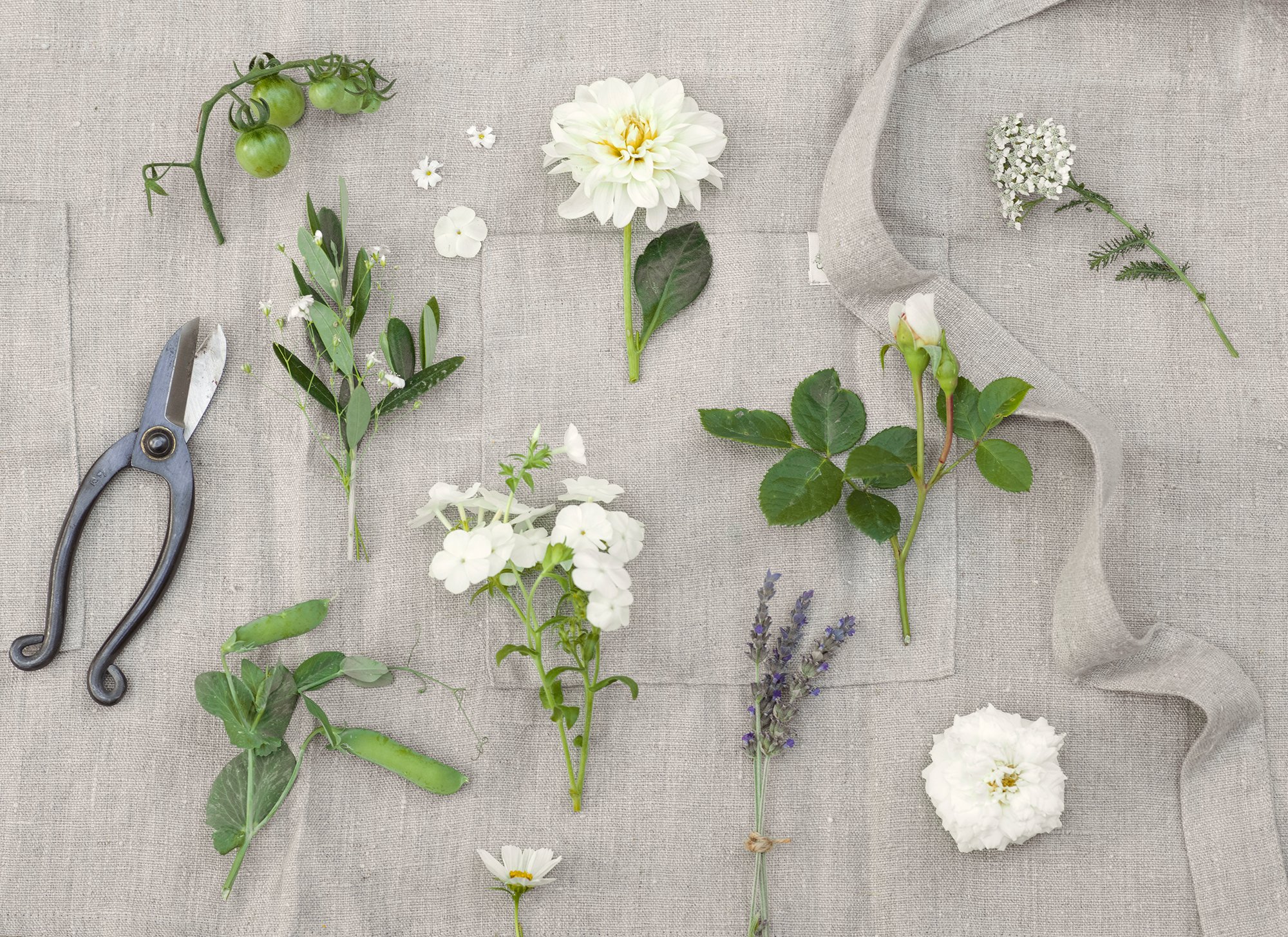
Photo by Kim Wiseley
3. When clipping flowers, it’s best to make your cut just above a leaf node where the leaf joins the stem. This will encourage new growth on the plant.
4. Be thoughtful about your clippings. A goal of mine is to keep the garden looking like it hasn’t been touched!
5. From whimsical vines and seed pods to interesting branches and excess greens from the vegetable and herb garden, everything is up for grabs! I love incorporating sprigs of snap peas, fresh lavender and mint, even citrusy kumquats when they are in season.
6. Place your flowers or foliage in a bucket of water immediately after clipping, allowing them to hydrate and perk up. Keep them in a cool space away from direct sunlight until you are ready to use them. I recommend adding a pinch of flower food to your water. It really helps flowers to hydrate and fight off the bacteria that shortens their vase life.
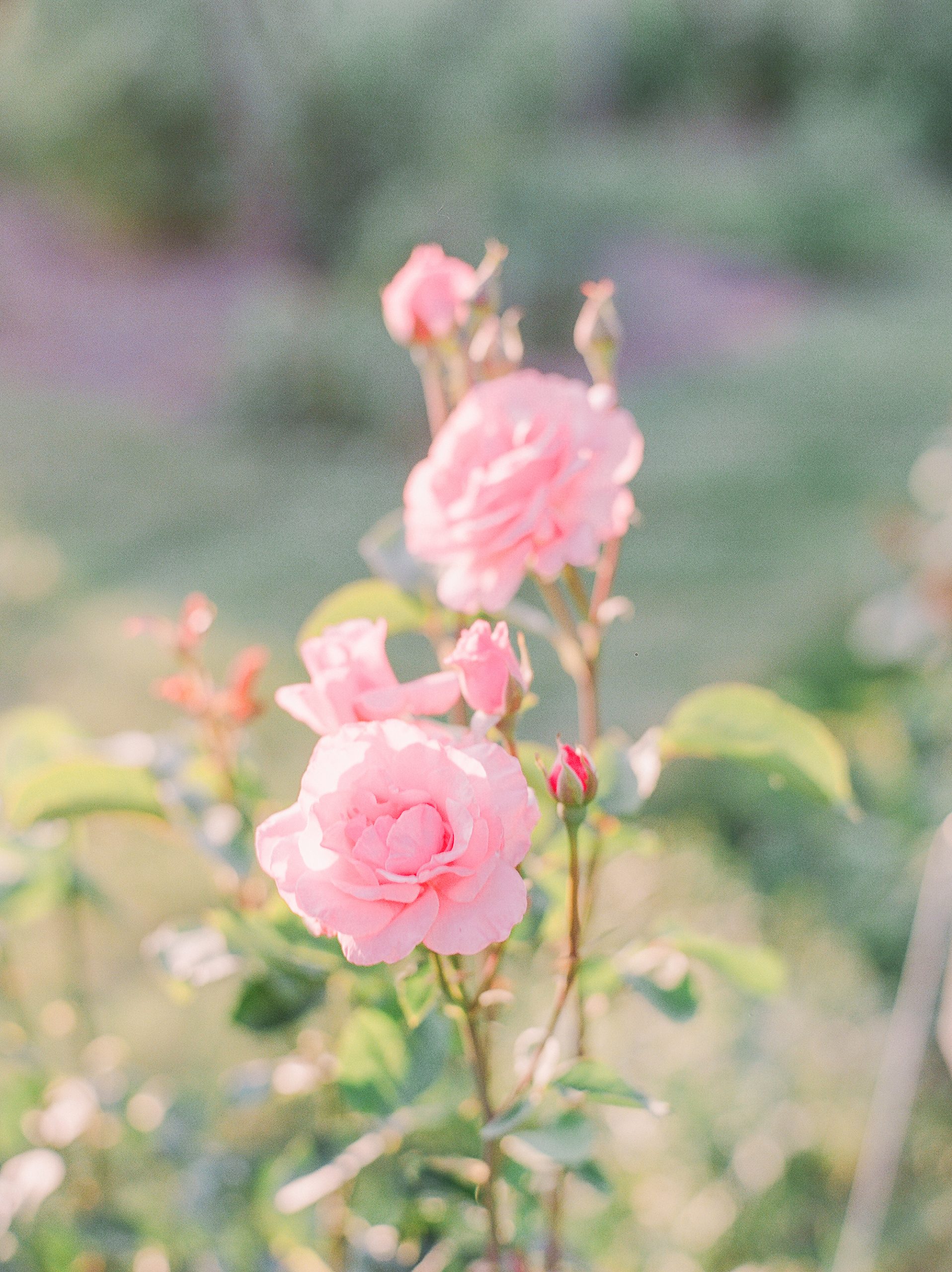
Photo by Julie Paisley
*Garden rose tip: Once clipped from the bush, garden roses are fleeting. I like clipping a cluster of barely open buds, transporting the beauty of their bloom and scent indoors to the vase.
Respectfully Foraging
If you don’t have access to a garden, you can still bring a dose of Mother Nature home through everyday activities like nature walks and hiking! Below are a few tips for respectfully foraging the land around you:
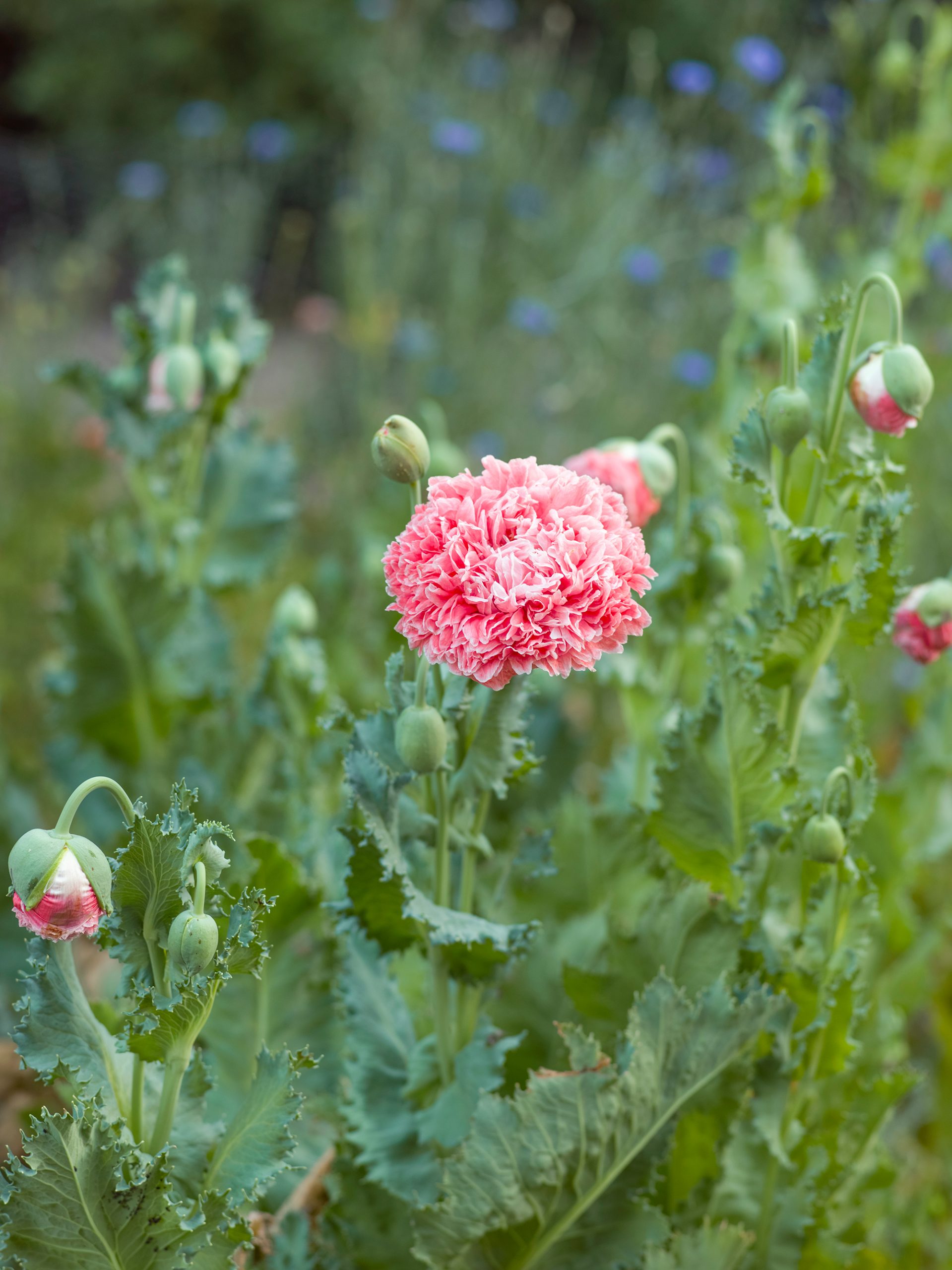
Photo by Kim Wiseley
1. When necessary, ask for permission.
2. Use clippers in lieu of tearing branches or stems by hand.
3. Be mindful. Take only what you will actually need.
4. Clip from abundance. If there’s only one of something, leave it be.
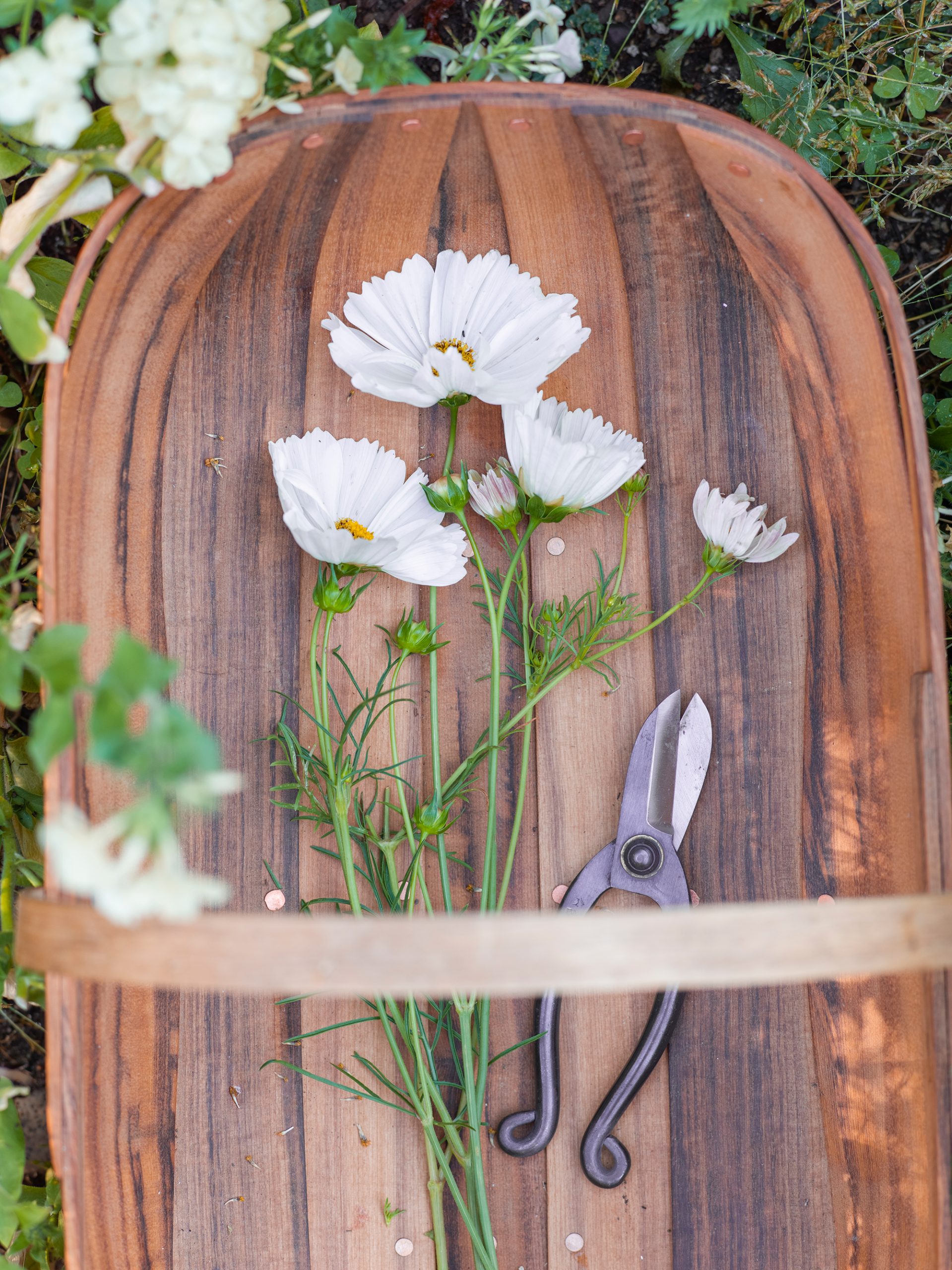
Photo by Kim Wiseley
10 Design Tips
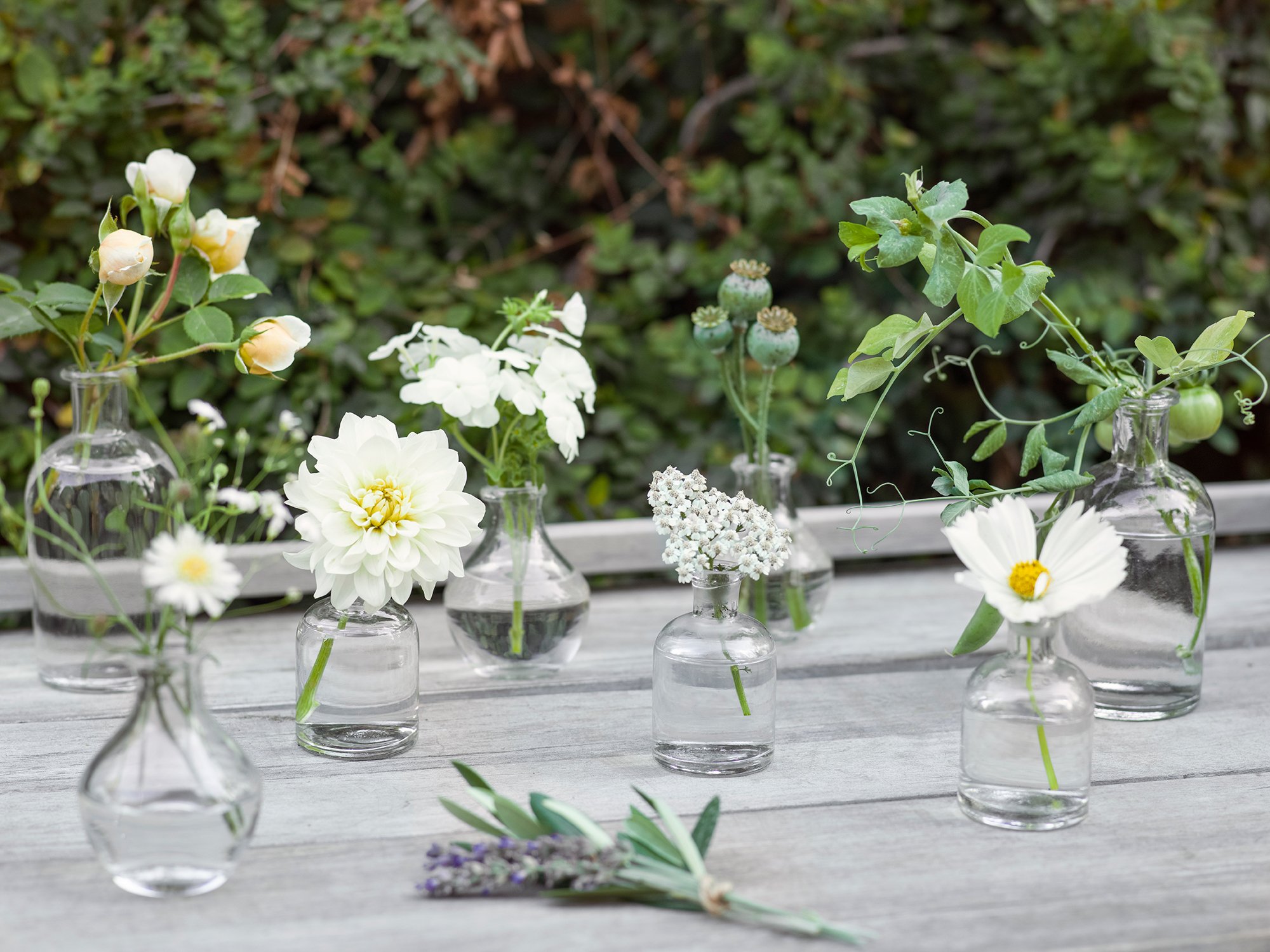
Photo by Kim Wiseley
1. Cut your stems at a variety of lengths to create interest. This alone can elevate a simple mason jar arrangement to an artisan display of florals.
2. Remove any excess greenery or foliage that will fall below the waterline of your vessel to avoid bacteria from building up.
3. When making an arrangement, start with your larger foliage pieces to create the base shape. Next, add your statement blooms. Last, add any whimsical flowers or vines for the finishing touch.
4. Go with the flow of your flowers. Don’t fight their natural movement.
5. A summer favorite for the table is a monochromatic runner of clippings in bud vases of a variety of shapes and sizes. It’s so simple, organic and chic!
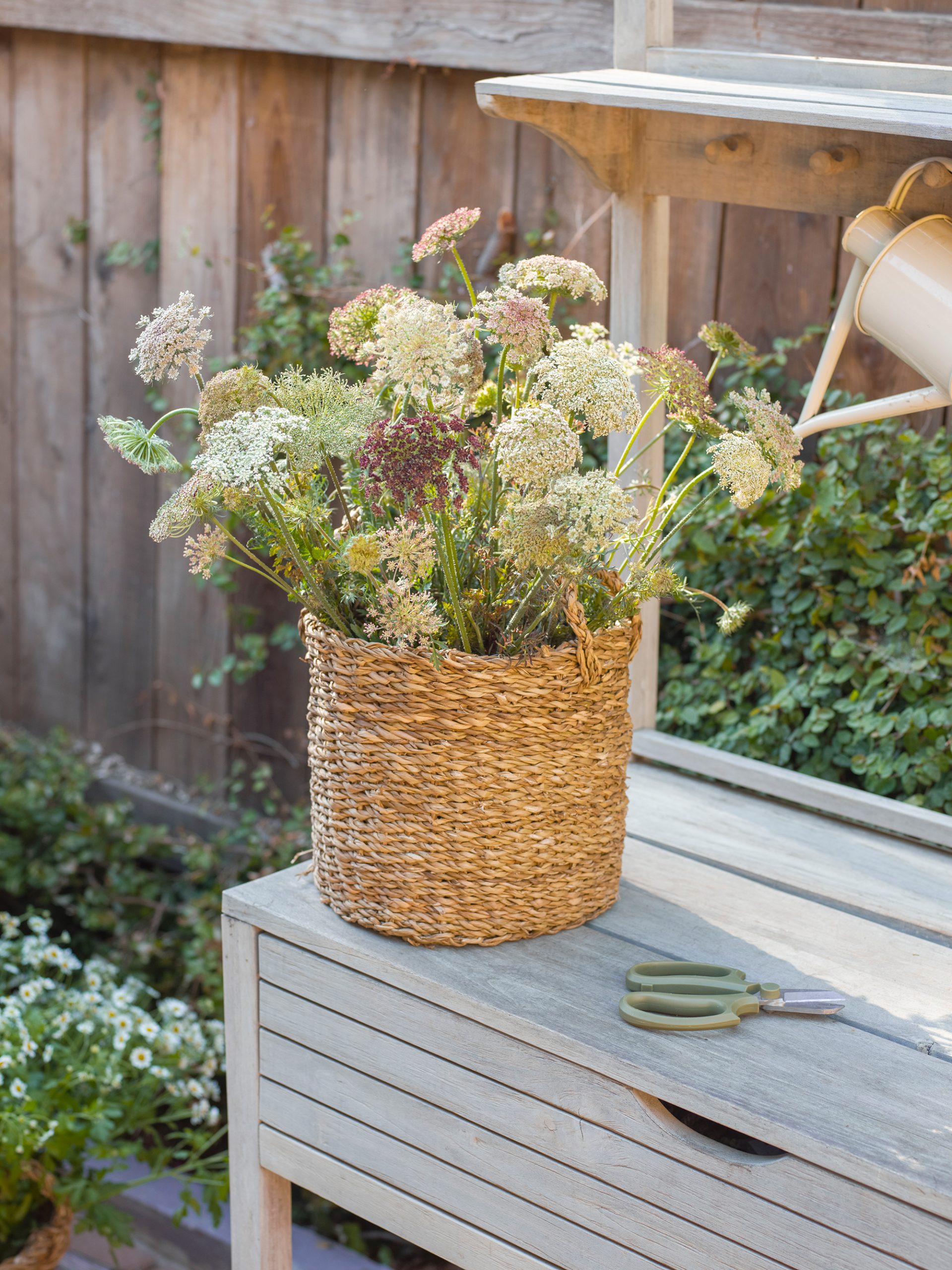
Photo by Kim Wiseley
The Floral Pantry Bloom Basket, at $37
6. As long as it can hold water, anything can be a vessel! My latest floral musings revolve around arranging in a basket. Inspired by the glory of wild flowering meadows and effortlessly-chic European country sides, our bloom baskets are the perfect vessel for a billowing abundance of blooms. Think entryway statement, shaded patio decor or even a lush living room accent.
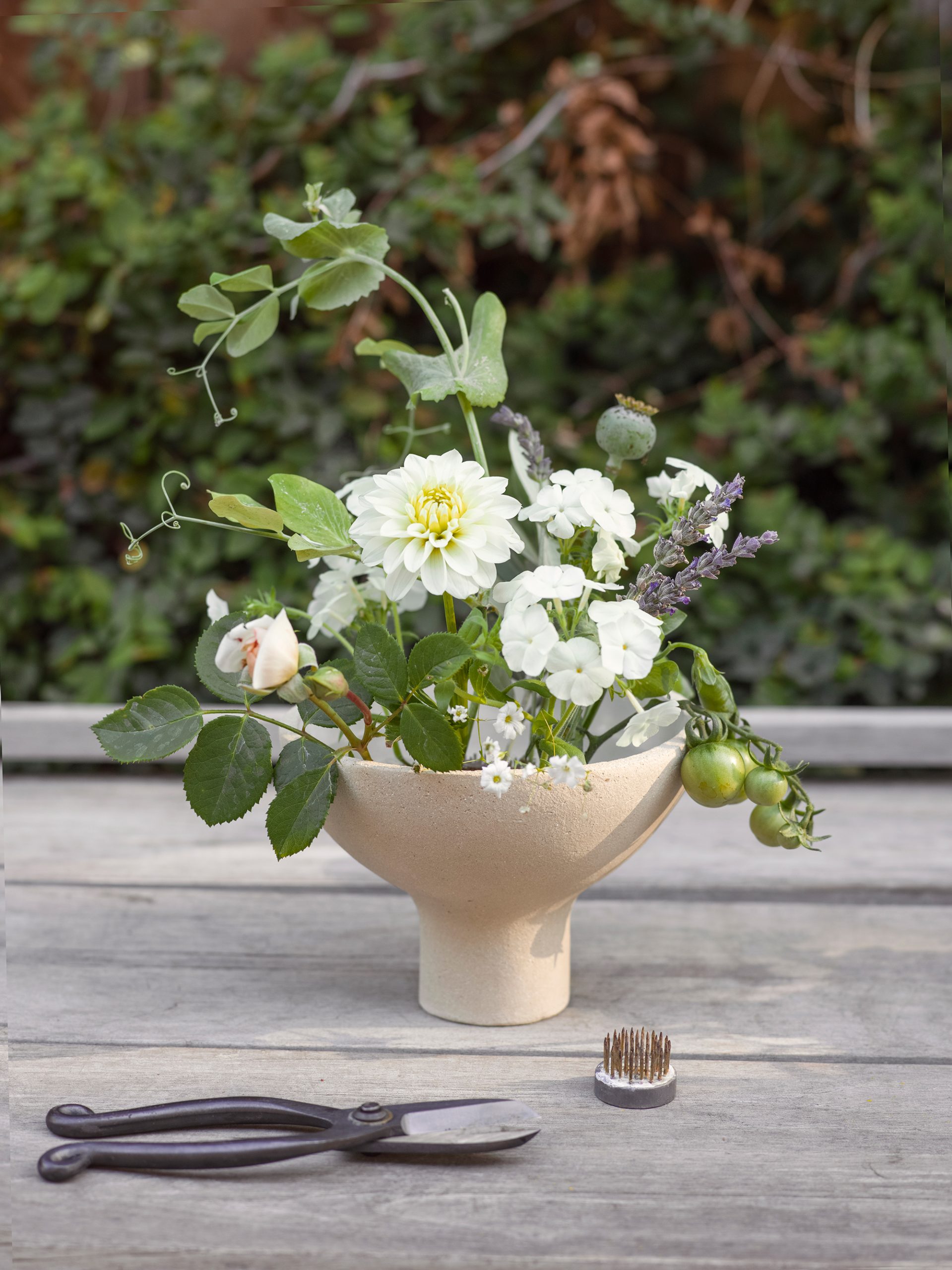
Photo by Kim Wiseley
8. Small clippings of herbs and tiny flowers tied together with twine make for the sweetest accent to a place setting.
9. When it comes to the home garden, simplicity is the ultimate sophistication. I’ve found the fresh-picked-from-the-garden aesthetic is most pleasing with bundles of single-variety flowers and/or a monochrome palette of flowers and foliage.
10. To help extend the vase life of your flowers, change the water every couple of days and give your stems a fresh snip at a 45-degree angle. This helps them to continue to hydrate.
Growing This Summer
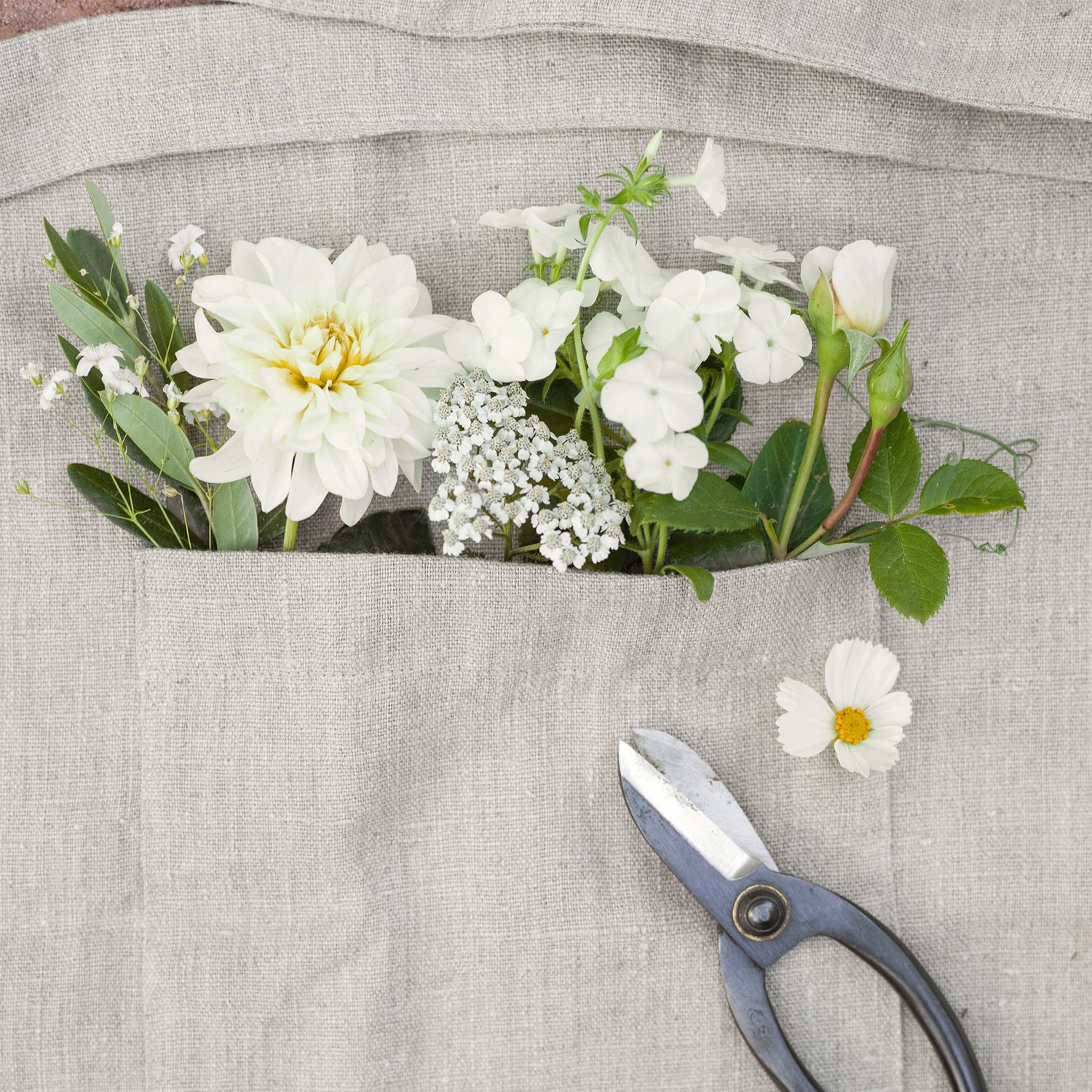
Photo by Kim Wiseley
If you haven’t already been growing a flower garden and you’d like to, there’s still time this year! There are a few showstoppers that will flourish through summer and into fall in most parts of the country. Plan to get started with the following flowers as soon as possible:
*Note: Be sure to check your USDA Plant Hardiness growing zone. This will set you up for success, helping you to determine which flowers and plants are most likely to thrive at your location.
1. Cosmos: Try the Double Click variety. The ladylike ruffles are the loveliest!
2. Dahlias: Time is of the essence to get dahlia tubers in the ground, but you can do it! Dahlias can successfully grow in garden pots or directly in the ground and they offer a vibrant and prolific bloom. There are hundreds of varieties to choose from so do your research.
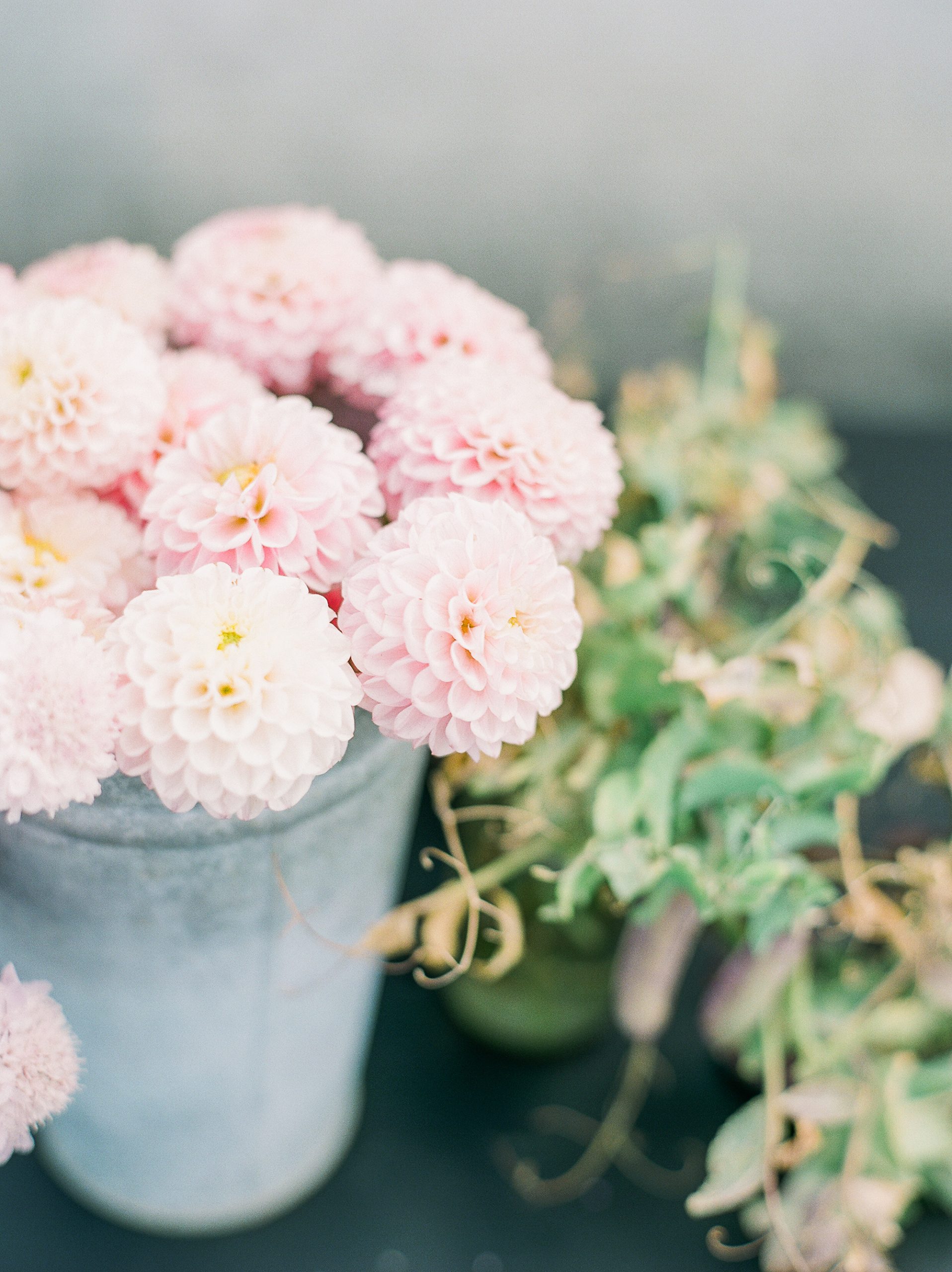
Photo by Julie Paisley
3. Sunflowers: Try your hand at the traditional sunshine yellow or search for more unique varieties like ProCut White Lite, Chocolate or Goldy Double. Johnny’s Seeds has a great selection of colors, shapes and sizes.
4. Zinnia’s: Available in a rainbow of colors, these joyful flowers are super easy to grow. The more you harvest, the more they will continue to bloom. Visit Floret’s website for great advice on growing these sweet summer beauties!
Like zinnia’s, cosmos and dahlias also benefit from regular harvesting (or deadheading) of the flowers. This will rejuvenate the plant, encouraging continuous blooming through autumn.

Photo by Michelle Beller
Are there any flowers you’d like to grow this summer?
To learn more about Kim and Floral Pantry, head to her website here and her Instagram here.
XO Team LC
Photos: Michelle Beller, Catherine Mead, Julie Paisley, Kim Wiseley
Affiliate links may have been used in this post.
